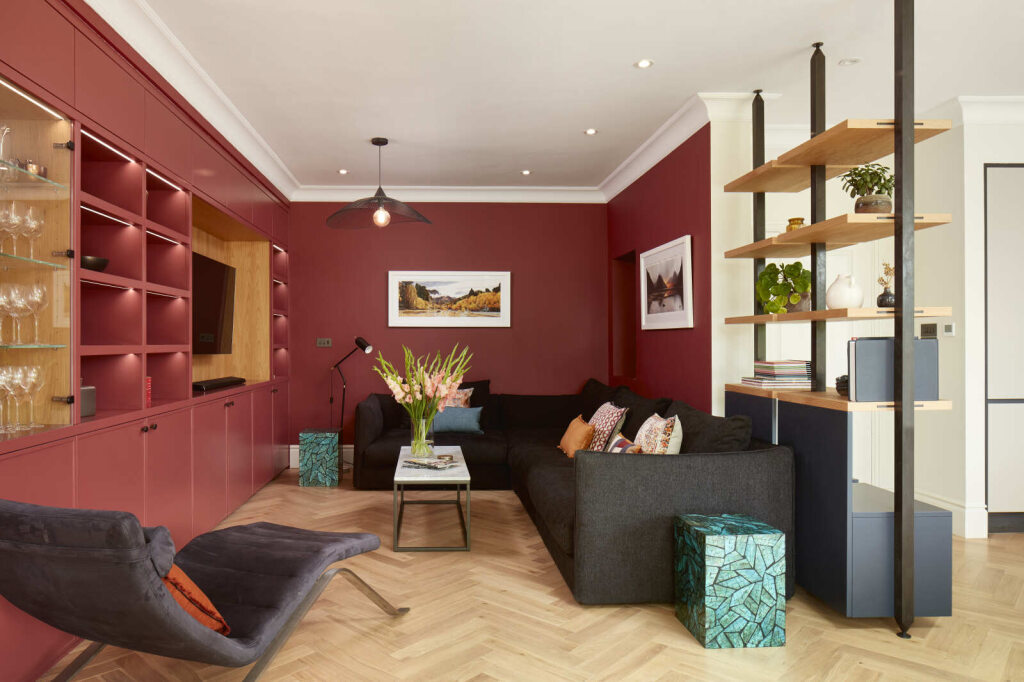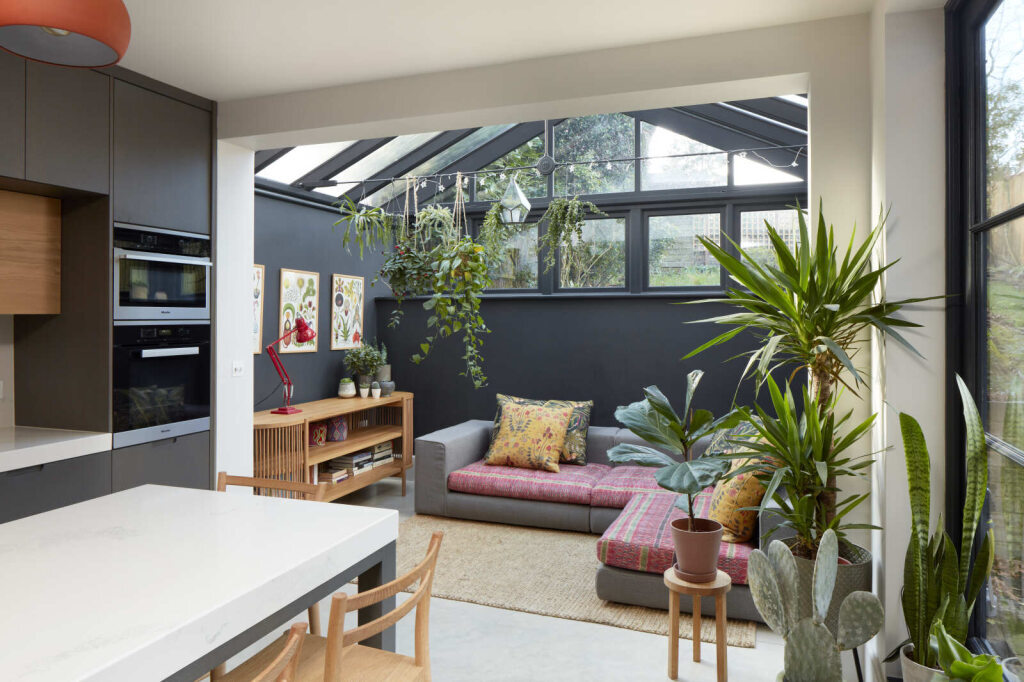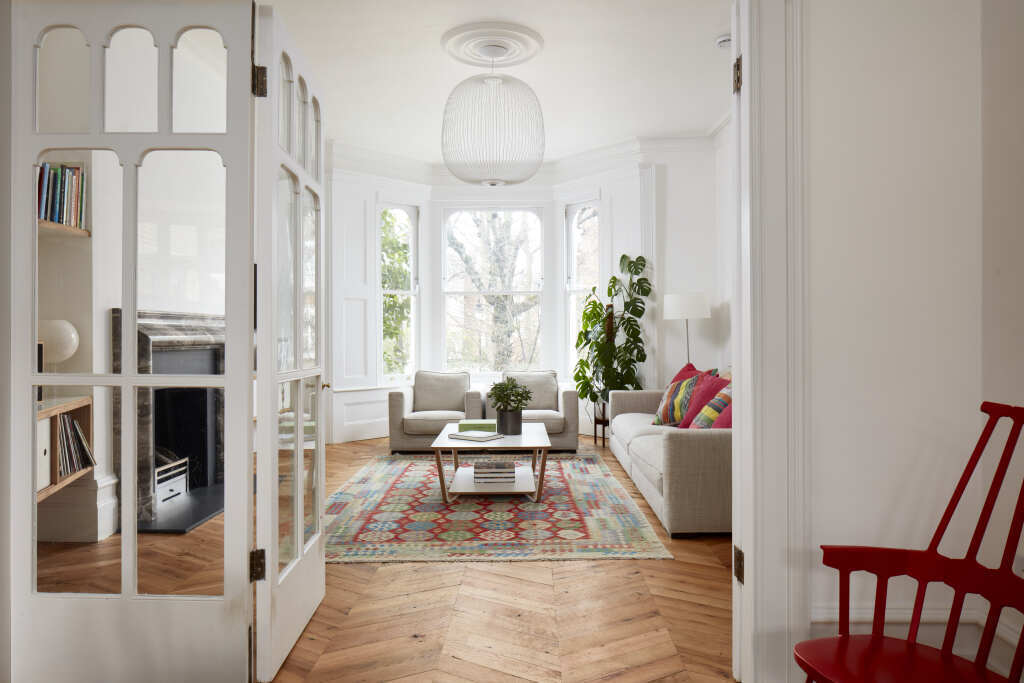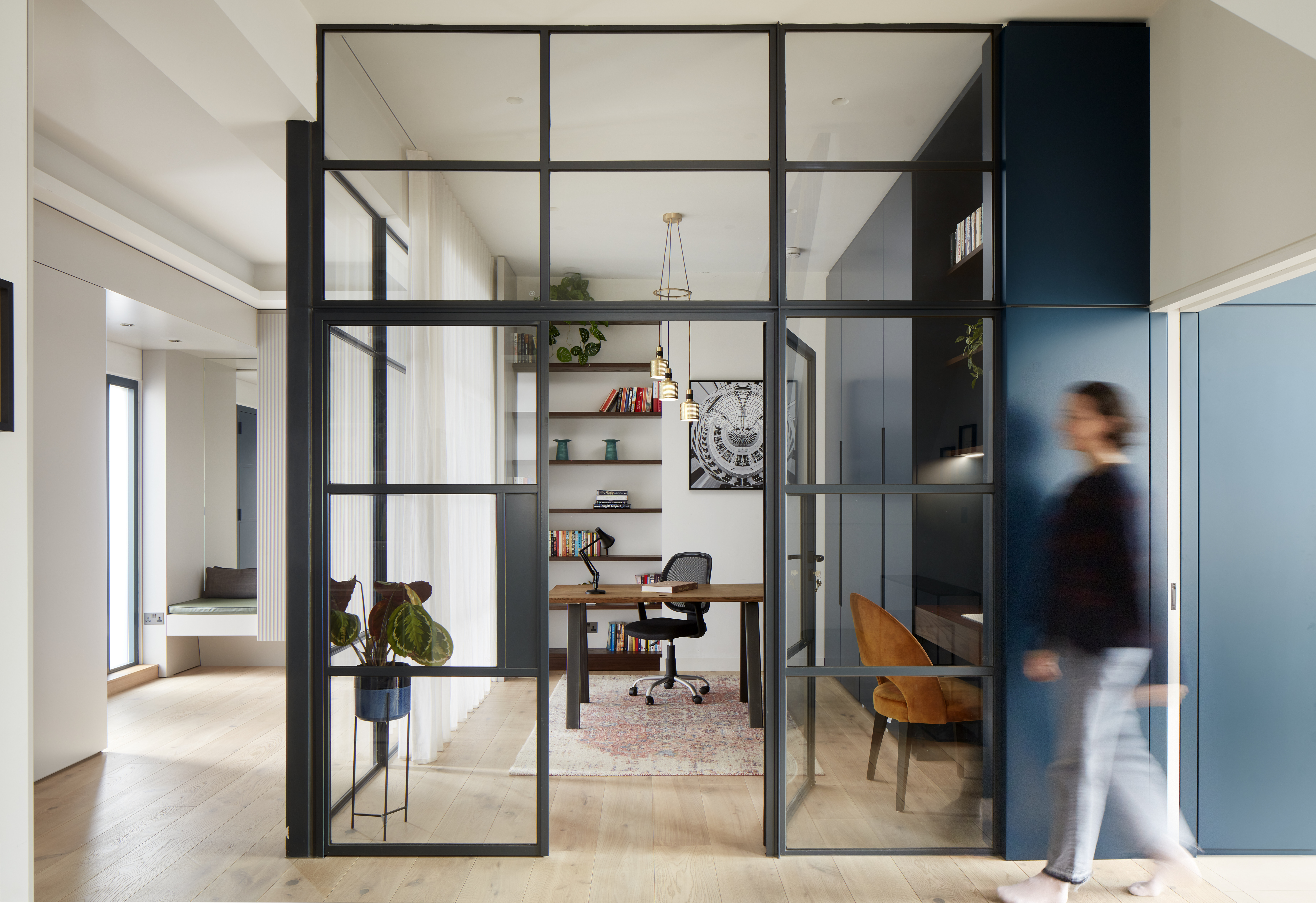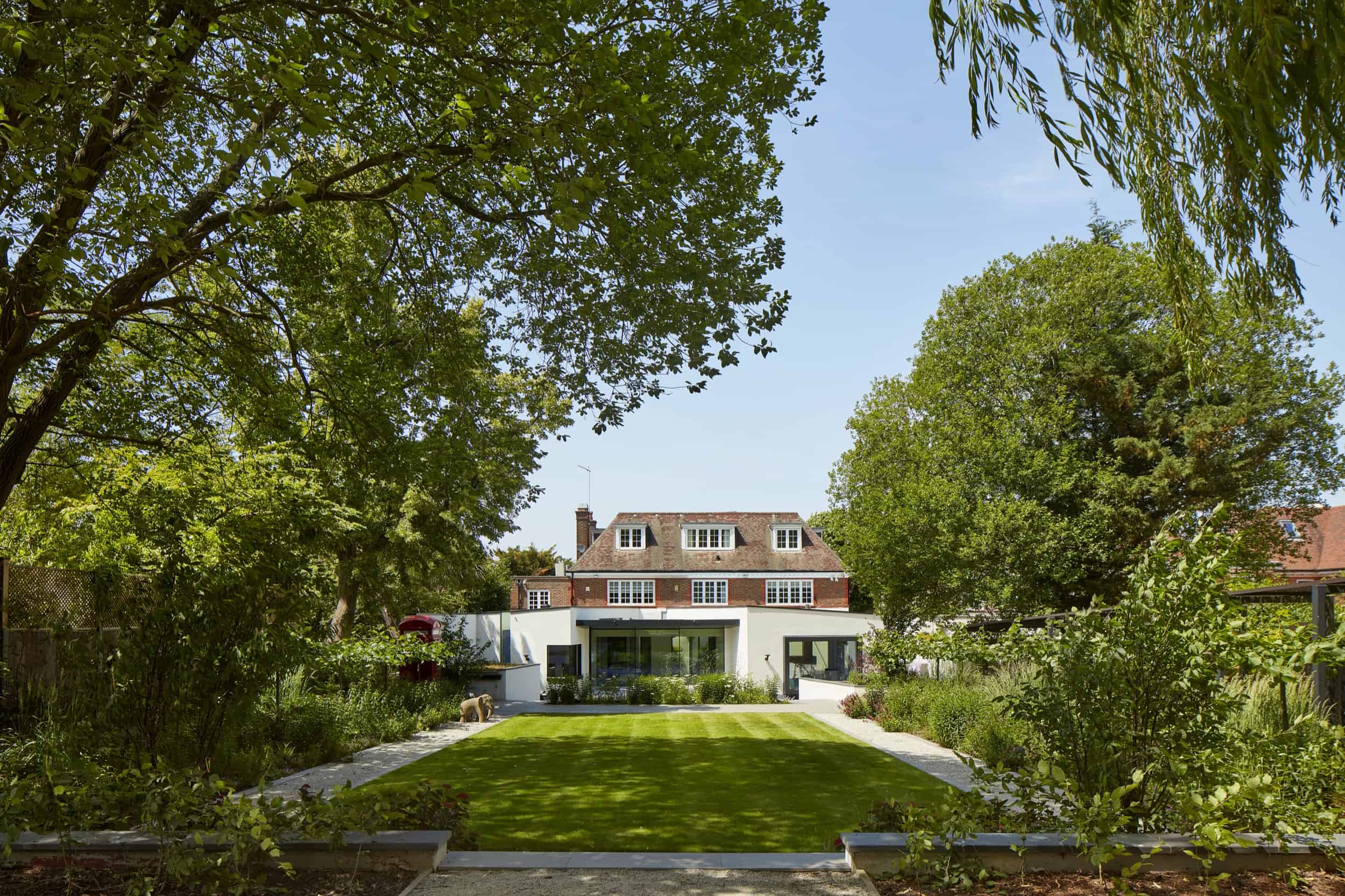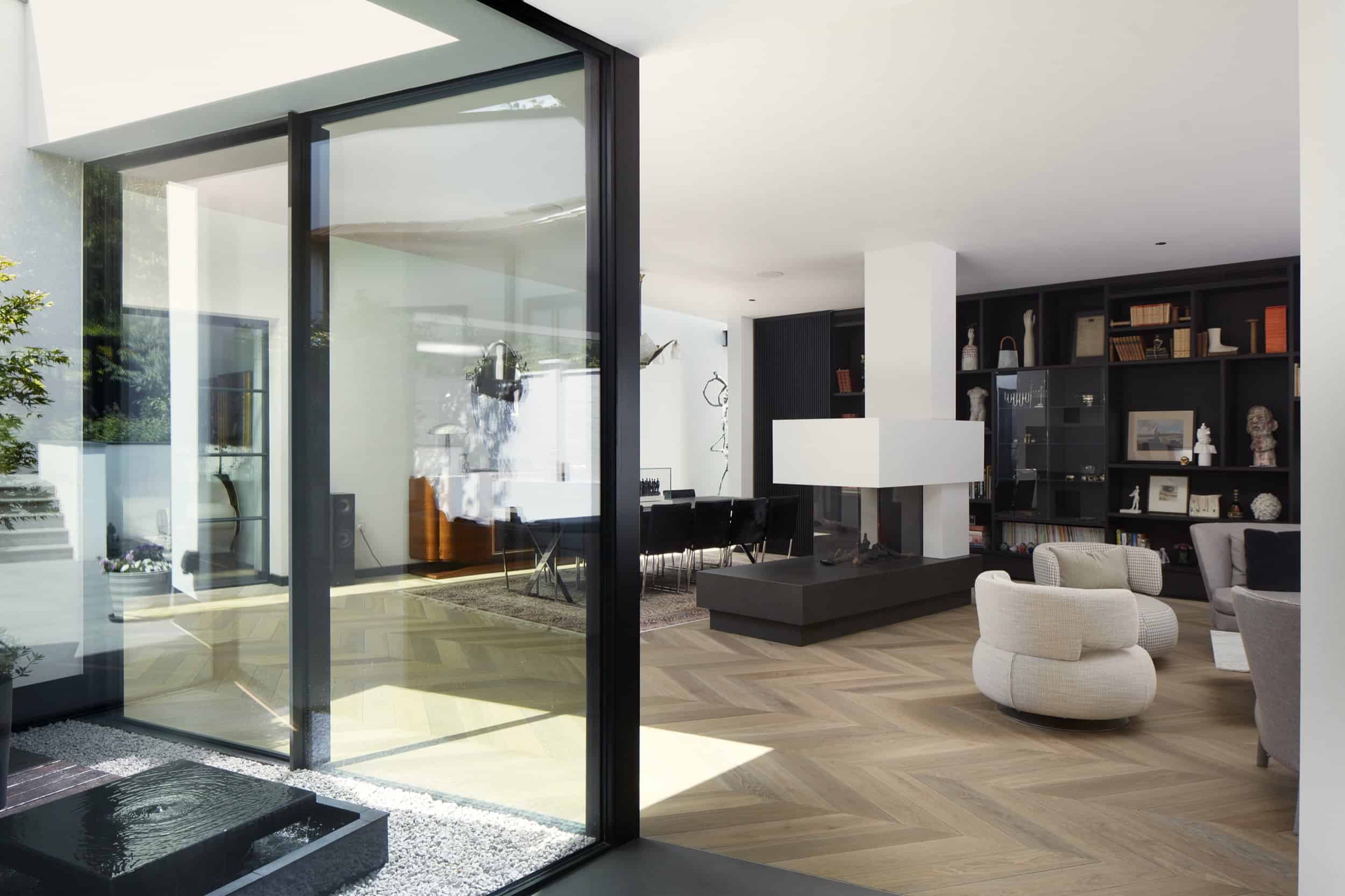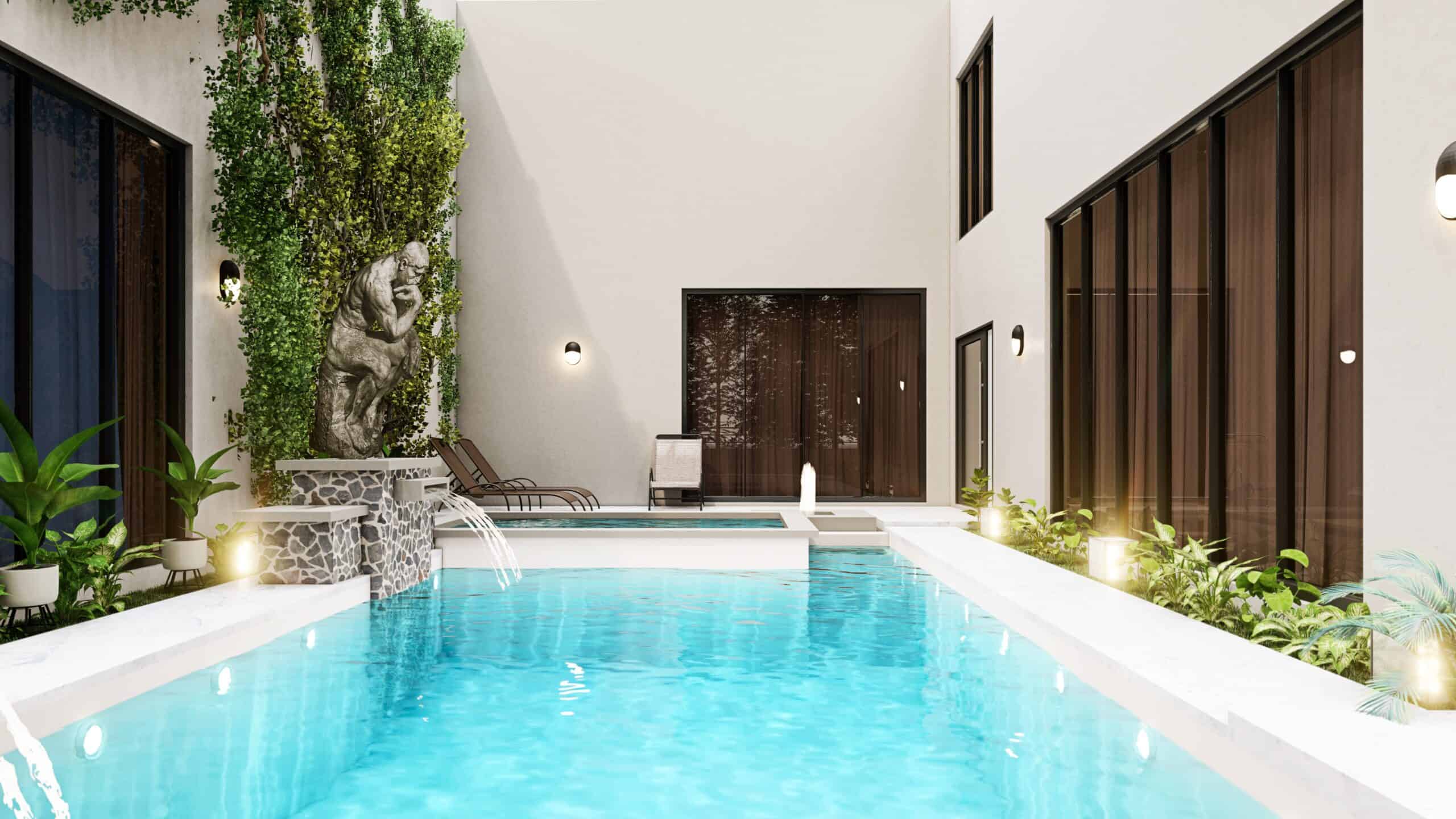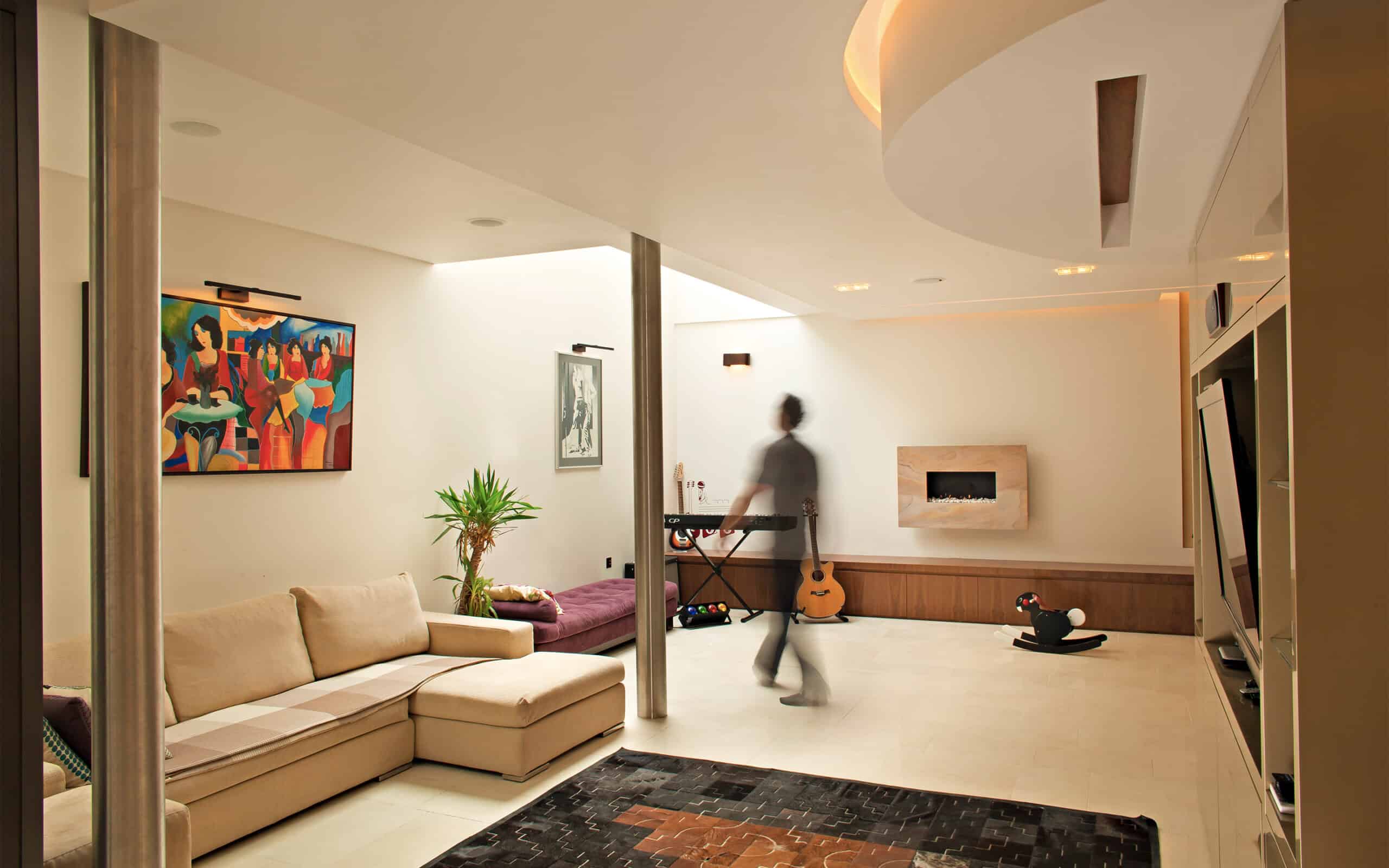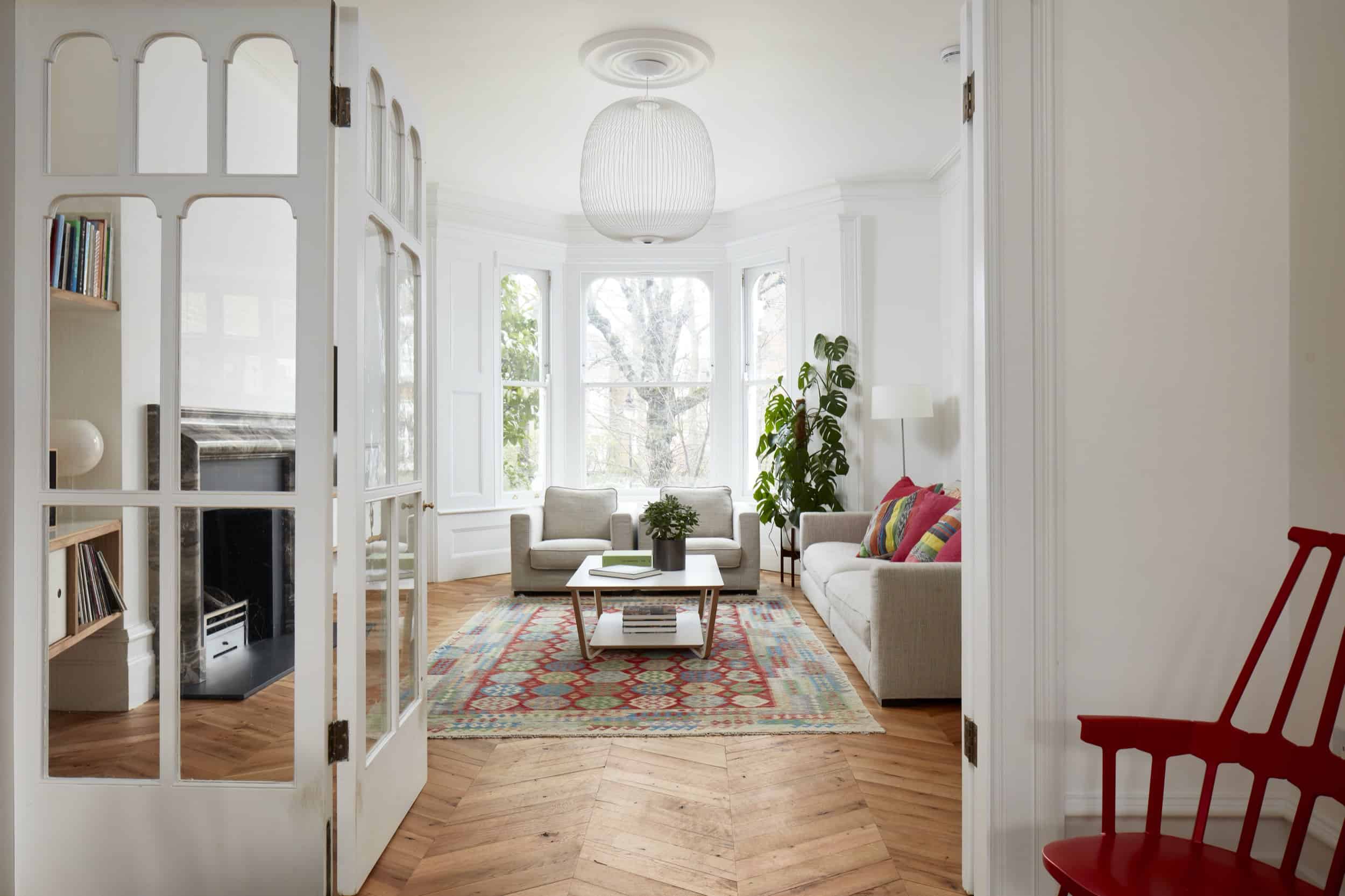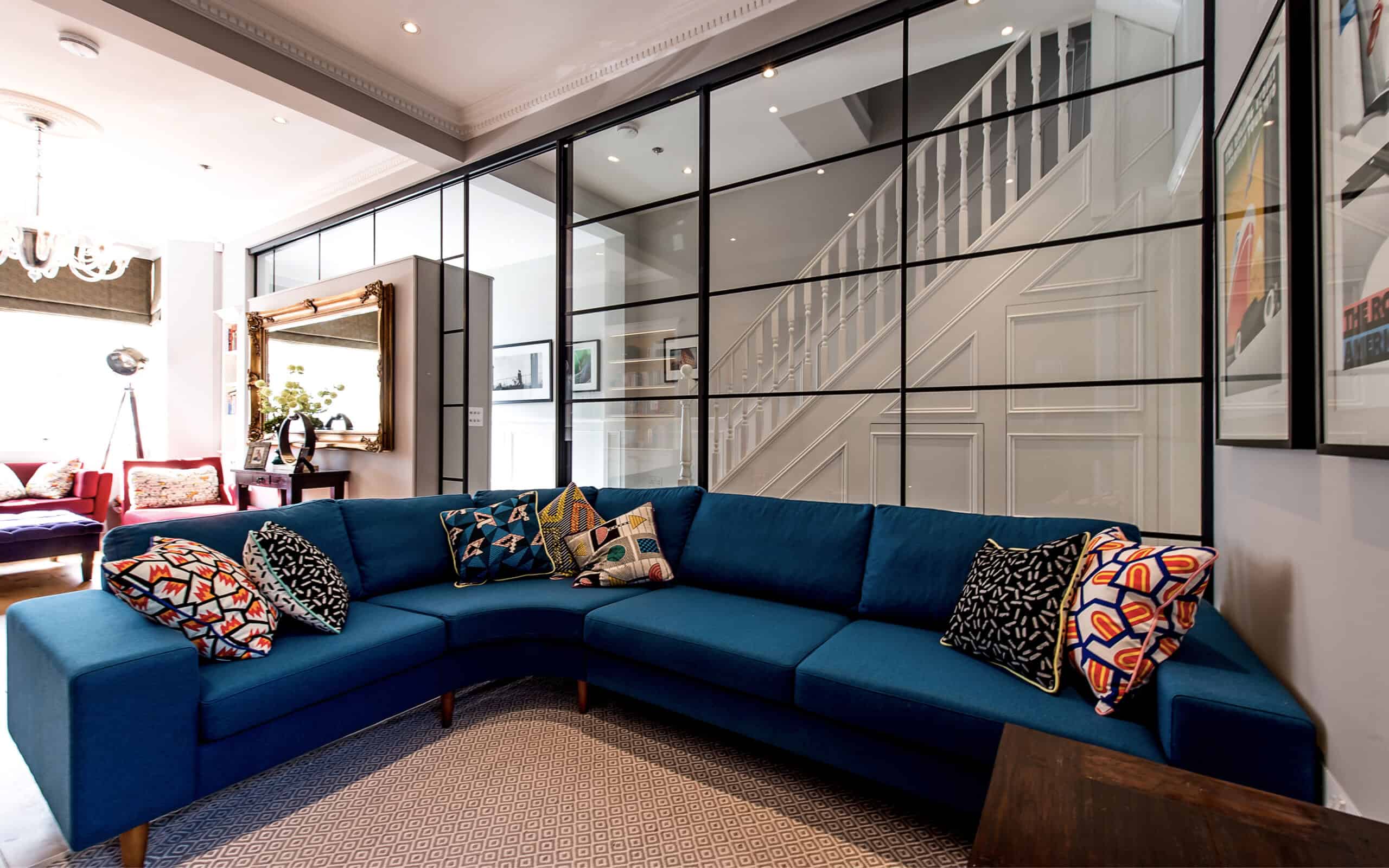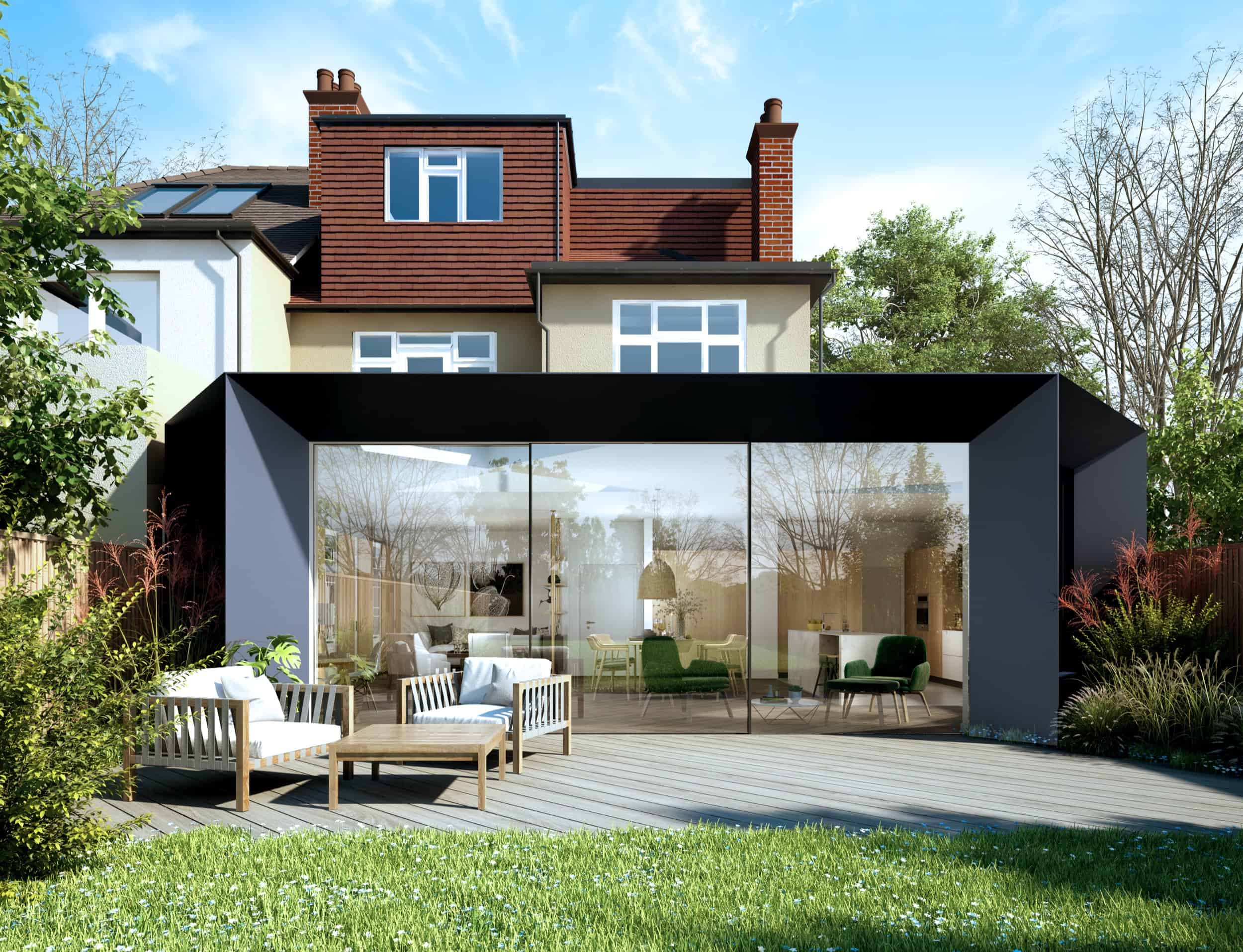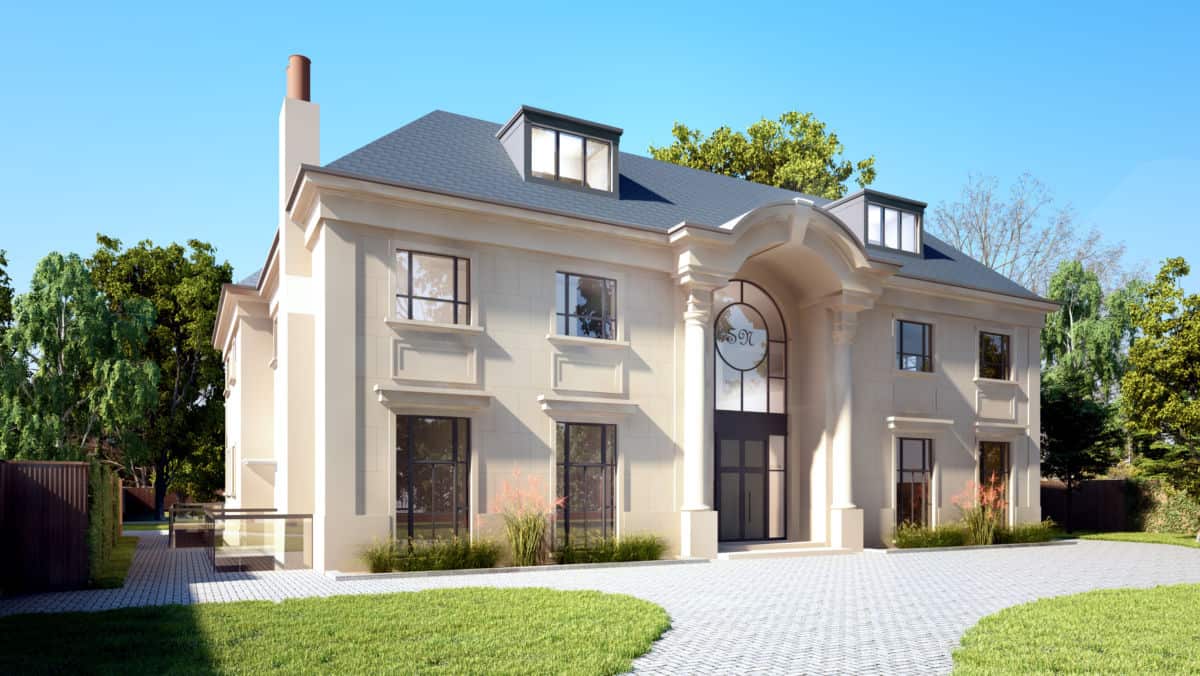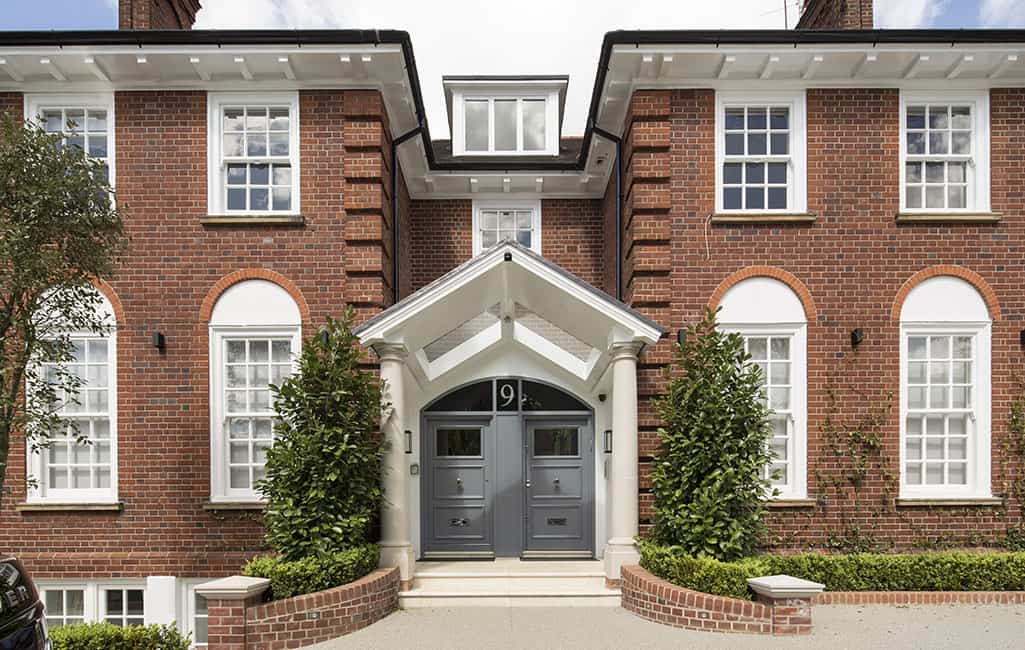Double height living room in architecture
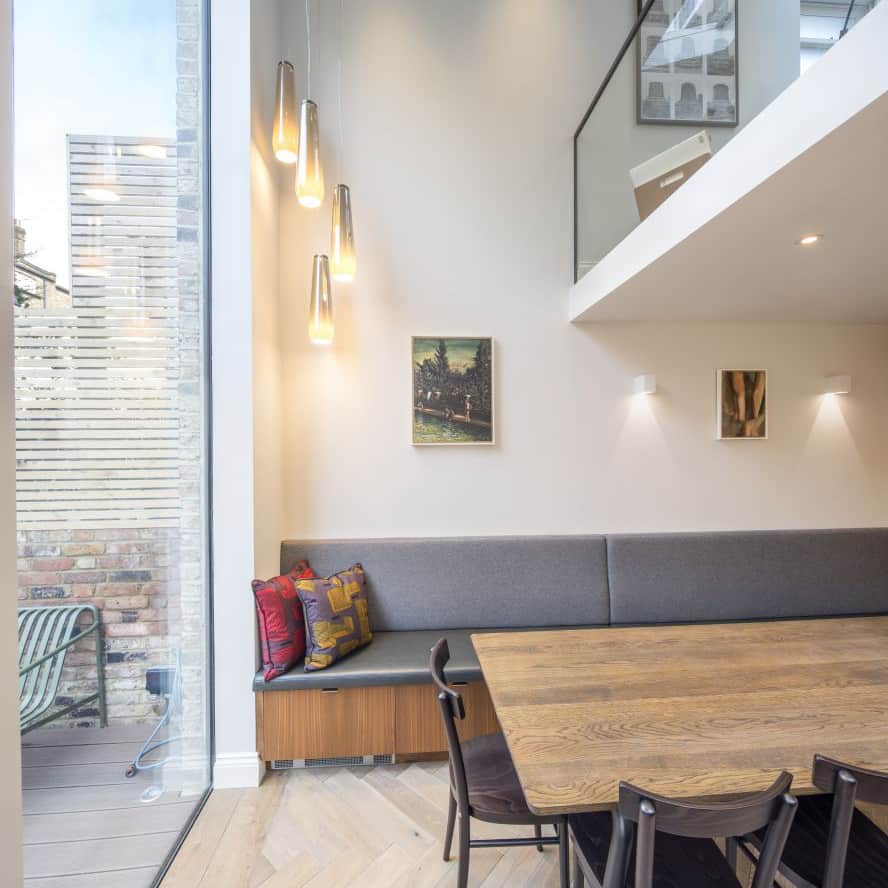
According to Le Corbusier, space empowerment was one of the essentials of contemporary architecture. For the Swiss architect, architecture was fundamentally about creating an awe-inspiring atmosphere without restrictions, aiming to positively affect the way of life for its inhabitants.
Le Corbusier’s ideas resonate today, particularly due to the rising popularity of double-height spaces in modern architecture. These architectural features significantly improve ventilation, enhance natural illumination, and provide an overwhelming sense of spaciousness.
The double-height ceiling has become a symbol of modernisation. It not only creates an abundance of space when executed properly but also offers a design impact that’s hard to ignore. A double-height ceiling helps to blur the boundaries between rooms, while also unifying different floors into a coherent spatial narrative. Whether you have living rooms that open to upper balconies or libraries distinguished by towering ceilings, the incorporation of a double-height ceiling can be a transformative feature, both elevating the architectural aesthetics and enhancing the space’s functionality.
In large house extensions, implementing a double-height ceiling can serve as a visual focal point, drawing the eye upward. The expansive wall area created by a double-height ceiling also provides an ample canvas for texture and decorative elements, essentially serving as a limitless drawing board for creative design opportunities.
The popularity of double-height ceilings has ebbed and flowed over the decades. In the 19th and early 20th centuries, homes frequently featured generous, elevated ceilings complete with ornate detailing and cornicing. However, during the 1960s, the trend shifted towards lower ceilings, resulting in more compact spaces.
The choice to incorporate a double-height ceiling ultimately rests on your personal preferences and the kind of impact you wish to create in your home. It’s an option well worth considering. The added volume can inject much-needed light and space, not to mention contribute to creating that “wow factor” many homeowners desire.

For many homeowners, the allure of a double-height ceiling, particularly in the entrance hall, is undeniable. The natural light that comes flooding in due to this design element is another key reason why homes featuring double-height ceilings have soared in popularity.
Makes the Room Appear Bigger
One of the most immediate benefits of a double-height ceiling is how it makes an ordinary room appear more expansive and airy.
Natural Light Abundance
Rooms with double-height ceilings often feature extra windows. This design allows for an abundance of natural light that brightens up your home, reducing the need for artificial lighting and thereby lowering electricity costs.
Enhanced Decor Opportunities
Double-height ceilings offer a canvas for creative interior design. If your house has a fireplace, you can construct a tall, dramatic stone wall that complements the double-height ceiling instead of opting for a traditional backdrop. Elegant light fixtures can also serve as a focal point, enhancing the space’s overall aesthetic.
Boosts Home Value and Resale Ease
High ceilings are a feature that potential buyers tend to appreciate. If your home sports a double-height ceiling, you’ll likely find it easier to attract and engage potential buyers.
However, the glamor of double-height ceilings comes with its own set of challenges:
Complicated and Costly Maintenance
Over time, all ceilings require maintenance, such as repainting. The loftiness of a double-height ceiling can make these tasks more challenging and may require hiring professionals, thereby increasing costs.
Heating and Cooling Difficulties
High ceilings can be particularly hard to heat and cool efficiently. Because hot air rises, rooms with double-height ceilings can be chilly at ground level during winter. Conversely, the large volume can be harder to cool during hot weather, leading to higher utility bills. Installing ceiling fans can help distribute warm air in winter and cool air in summer.
Increased Noise Levels
The open space that comes with high ceilings can carry sound more easily, which may be disruptive in some scenarios.
While double-height ceilings offer a range of benefits, they may not be everyone’s cup of tea. Some people might prefer the intimacy of lower ceilings and smaller rooms. Regardless of your preferences, it’s crucial to do your research and make an informed decision about whether a double-height ceiling is the right choice for your home.


